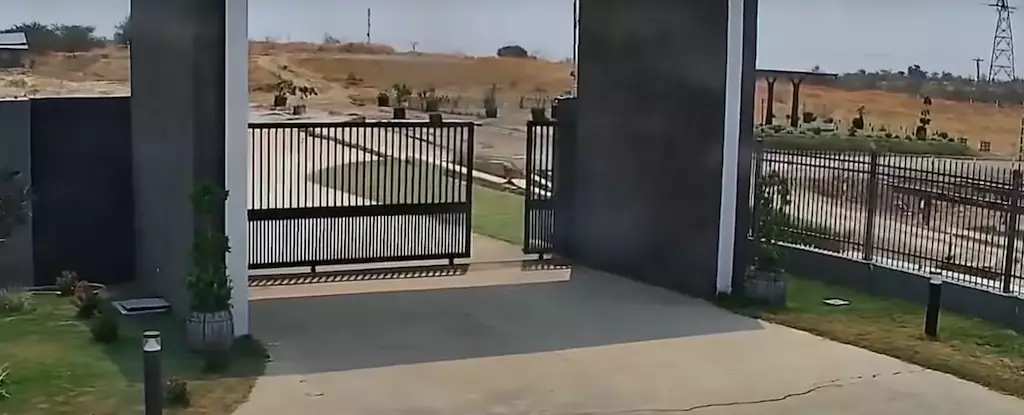In an unsettling display of nature’s raw power, a devastating earthquake struck Myanmar on March 28, 2025, leaving an indelible mark not only on the landscape but also on the human spirit. This was no ordinary seismic event; a magnitude of 7.7 and an astonishingly shallow depth of just 10 kilometers transformed a serene day into a hellish ordeal for thousands. More than 3,700 lives were lost, and countless others were left injured, underscoring the brutal reality that Mother Nature can turn our lives upside down in mere moments. The existence of a security video capturing this catastrophic event offers a chilling insight into an occurrence that is typically reserved for the pages of scientific textbooks or historical accounts.
Despite myriad earthquakes occurring across the globe, few have captured the public’s attention like this one. The footage, filmed at the GP Energy Myanmar’s Thapyay Wa solar facility, opens with unassuming tranquility, only to devolve into a nightmarish ballet of destruction. It serves as a visceral reminder that earthquakes do not merely remain theoretical constructs measured in Richter scales and fault lines; they physically reshape our world. Watching the ground ripple and crack in real time forces us to confront the terror that lurks beneath our feet—a terror that is, in many ways, emblematic of our vulnerability as a civilization.
Supershear: A Term That Strikes Fear
When seismic experts use the term “supershear,” they hint at an extraordinary movement that transcends our traditional understanding of earthquakes. The 2025 Myanmar earthquake exhibited this rare characteristic as it ruptured the ground with a speed surpassing that of shear waves. It’s a term typically reserved for extraordinary seismic events, and its implications are chilling. Not only did the rupture stretch an extensive 460 kilometers, but it also displaced the earth by over six meters in some areas. Imagine an unsettling force that not only shakes buildings but can also cause the actual terrain to rearrange itself—and do so at unimaginable speeds.
Rick Aster, a geophysicist who reviewed the footage, called it the best video evidence of such seismic activity. However, the fact that we even have this video is a double-edged sword. While it brings us closer to understanding these phenomena, it also serves as a grim reminder that our Earth is far less stable than we would like to believe. For those of us living in tectonically active regions, this becomes an alarming wake-up call that our infrastructures may not be as resilient as we think.
The Cascading Catastrophe
The shockwaves of the Myanmar earthquake did not end with the initial quake. The aftermath revealed a terrifying chain reaction that disrupted not only local infrastructure but also extended to high-rises in distant cities like Bangkok, which experienced structural failures due to the quake’s impact on soft-soil basins. This sets off alarm bells regarding just how interconnected our world has become. One region’s calamity becomes another’s problem; the implications of such events extend well beyond geographic boundaries.
Disaster, it seems, breeds additional disaster, and the repercussions of the March earthquake illustrate the cascading risks that modern societies face in an era of increasing urbanization. Consider the tectonic plate boundaries that run beneath regions like Myanmar and the fine line that separates daily life from utter chaos. In an age where technology aims to mitigate the risks of natural disasters, the question remains—are we adequately prepared for scenarios of this scale? The awareness raised by visual documentation compels us to engage in a dialogue about preparedness and response.
A Call to Action
As citizens of a world intertwined by technology, governance, and the environment, we ought to challenge ourselves: What is our responsibility in the face of these disasters? The haunting footage from Myanmar propels us into a realm of uncomfortable truths. No longer can we afford to believe that nature will always act predictably. The evidence is now in full view, glaringly captured on video, challenging us to confront our complacency. The struggle against nature is one we cannot ignore; it invites us to innovate, reform, and fortify our resilience in ways we might never have deemed necessary before.
This jarring reality of the earthquakes challenges us to think about the consequences of our urban landscapes, our emergency protocols, and our very understanding of seismic events. By fostering a commitment to safety, community preparedness, and scientific research, we hold the potential to shape a future that confronts, rather than succumbs to, natural disasters.

Leave a Reply